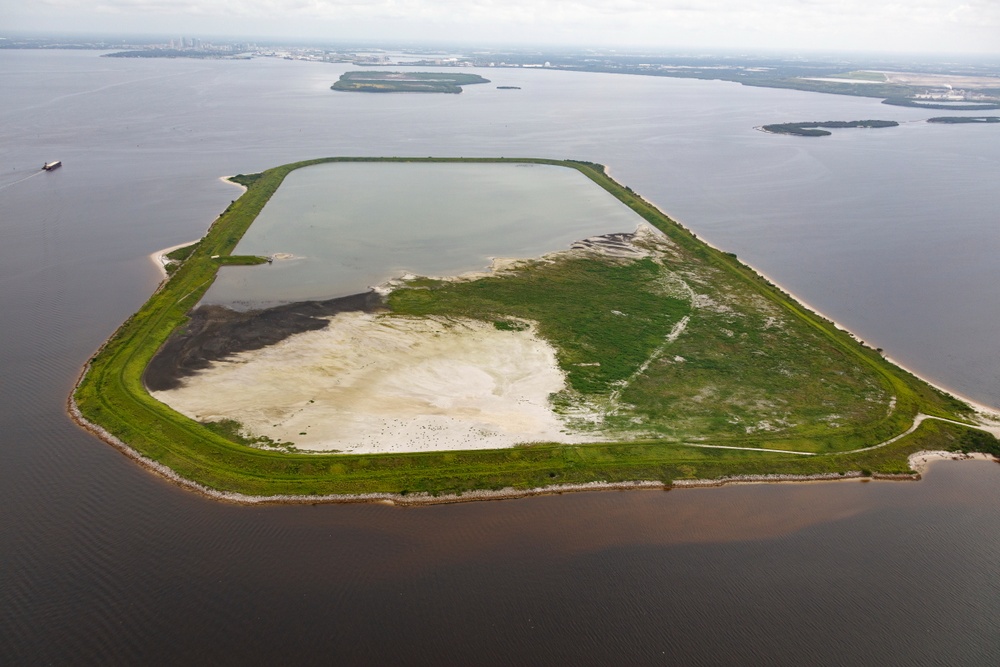
3-D Island, one of the port’s two dredge material management areas and spoil islands had the greatest diversity of nesting shorebird species than any other spot in the state.
The existing Federal navigation project includes roughly 70 miles of channels. The main stem channel that leads into the Tampa Bay port system is approximately 42 miles long, 500 feet wide, and 43 feet deep. This single stem channel must be transited not only by vessels going to and from the Port of Tampa, but also vessels going to and from Port Manatee, St. Petersburg Harbor, and Weedon Island. The single stem is comprised of nine cuts: Egmont Key 1, Egmont Key 2, Mullet Key, and Cuts A to F.
Port Tampa Bay is Florida’s largest port in cargo tonnage and land area. It serves as a major cruise port and services a diverse mix of bulk, break-bulk, container commodities, and energy products that serve central Florida. The port contributes over $17 billion in economic impact supporting more than 85,000 jobs. The Tampa Harbor Federal Navigation Channel was last deepened in 1970. (U.S. Army photo courtesy of USACE)
| Date Taken: | 10.13.2023 |
| Date Posted: | 10.13.2023 16:48 |
| Photo ID: | 8070644 |
| VIRIN: | 231013-O-AZ289-1347 |
| Resolution: | 1200x800 |
| Size: | 831.82 KB |
| Location: | TAMPA, FLORIDA, US |
| Web Views: | 46 |
| Downloads: | 3 |

This work, The Future is Priceless [Image 2 of 2], by Brigida Sanchez, identified by DVIDS, must comply with the restrictions shown on https://www.dvidshub.net/about/copyright.